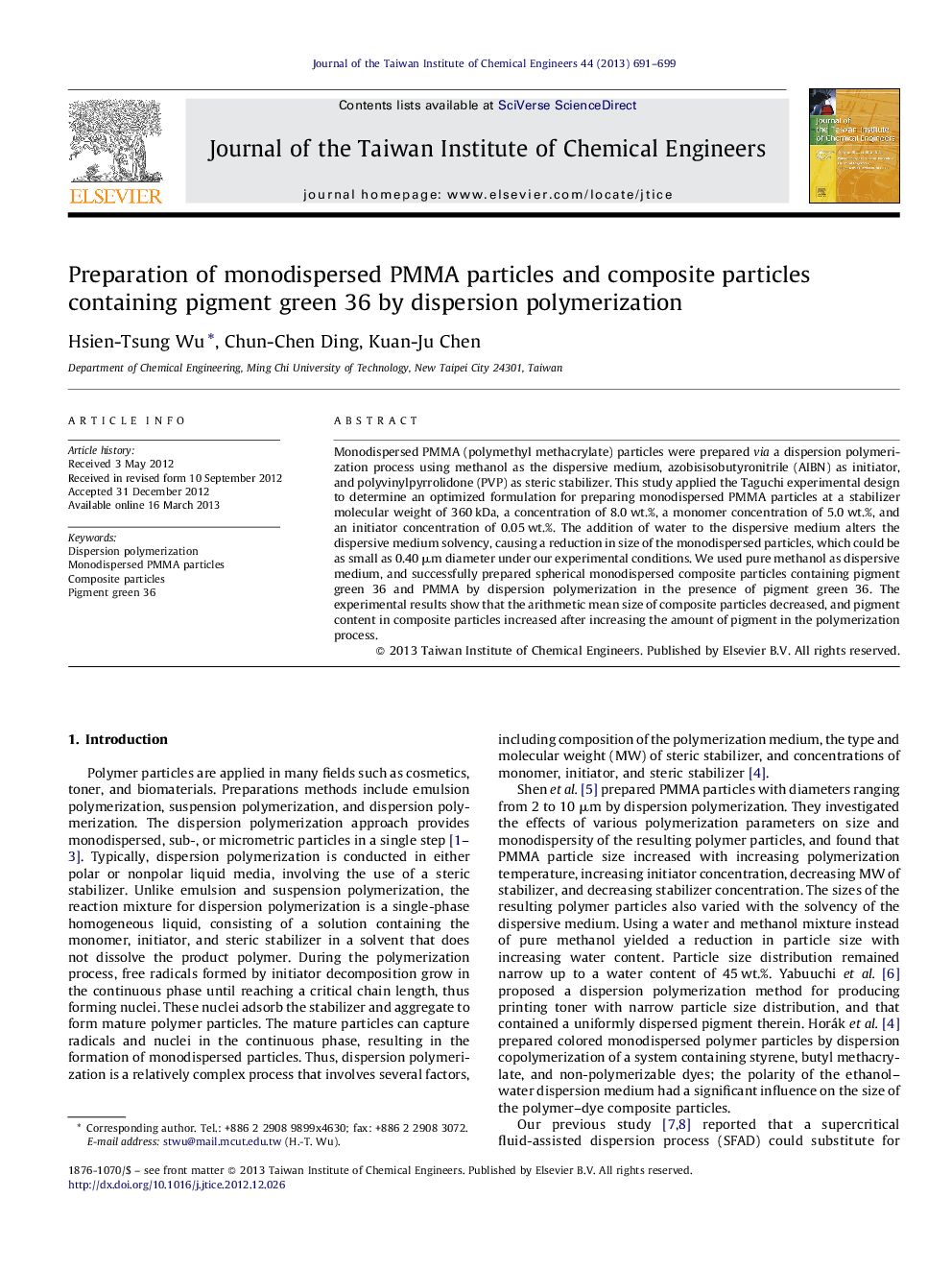| Article ID | Journal | Published Year | Pages | File Type |
|---|---|---|---|---|
| 691305 | Journal of the Taiwan Institute of Chemical Engineers | 2013 | 9 Pages |
Monodispersed PMMA (polymethyl methacrylate) particles were prepared via a dispersion polymerization process using methanol as the dispersive medium, azobisisobutyronitrile (AIBN) as initiator, and polyvinylpyrrolidone (PVP) as steric stabilizer. This study applied the Taguchi experimental design to determine an optimized formulation for preparing monodispersed PMMA particles at a stabilizer molecular weight of 360 kDa, a concentration of 8.0 wt.%, a monomer concentration of 5.0 wt.%, and an initiator concentration of 0.05 wt.%. The addition of water to the dispersive medium alters the dispersive medium solvency, causing a reduction in size of the monodispersed particles, which could be as small as 0.40 μm diameter under our experimental conditions. We used pure methanol as dispersive medium, and successfully prepared spherical monodispersed composite particles containing pigment green 36 and PMMA by dispersion polymerization in the presence of pigment green 36. The experimental results show that the arithmetic mean size of composite particles decreased, and pigment content in composite particles increased after increasing the amount of pigment in the polymerization process.
► Monodispersed PMMA and composite particles were prepared by dispersion polymerization. ► An optimal recipe for preparing PMMA particles obtained with the aid of Taguchi design. ► The mean size of PMMA particles was tunable by altered dispersive medium solvency. ► High pigment content in polymerization process could prepare fine composite particles.
